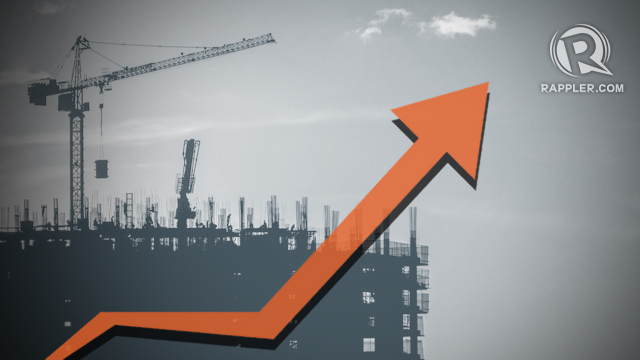SUMMARY
This is AI generated summarization, which may have errors. For context, always refer to the full article.

MANILA, Philippines — The country’s industrial property sector has been booming in the last 3 years amid inflow of investments from local and foreign companies, according to a property consulting firm.
“For the longest time, this sector has been described as a perennial laggard relative to the other [real-estate] segments,” Pinnacle Real Estate Consulting Services Inc. said in a report.
With renewed confidence in the Philippines, as supported by the investment grade granted by major credit rating firms, the industrial property sector has been attracting interest from investors.
The industrial property segment covers development and operation of industrial parks or estates.
Other segments that outperform industrial property are residential and office space rental.
READ: PH real estate industry welcomes investment grade
Interest from foreign players
“At the start of the previous decade, a lot of industrial park developers and operators experienced troubles as their inventories have become stagnant and even sold-out projects suffered as the exodus of foreign locators and manufacturers left some of the parks and estates ill-maintained and disregarded,” Pinnacle noted.
At the turn of the decade, however, “foreign companies flocked to the Philippines to avoid risks in other markets and to take advantage of what the Philippines has now to offer.”
A 139% year-on-year increase in approved foreign investments was registered in the Bureau of Investments (BOI) and Philippine Economic Zone Authority (PEZA) in the first half of 2013, the report noted.
Of these foreign investments, interest in the industrial segment came from the United States, Japan, and certain European countries.
Among them was Grupo Leche Pascua, a dairy company from Spain that plans on investing in the country after it has successfully launched its products locally.
Sonion Philippines Inc., a Danish electronics firm, has also built its 11,500-square-meter plant in Batangas.
In the Clark Freeport Zone, Ingasco, Inc., is developing a $40 million-air separation plant while Japanese aircraft parts manufacturer Jamco is investing P172 million.
Other Japanese firms in the “industrial foray” include Yokohama Tires, Shimano and Fujifilm, all of which expanded operations in the country.
The firm described these investments as “tip of the iceberg” as several others have approached the country’s investment promotion agencies—PEZA and BOI—for their investment plans.
Interest from local companies
Not to be outdone, local real estate players that used to focus on other real estate segments are now considering joining the boom in the industrial segment.
The firm cited SM Land, Megaworld, Filinvest and Ayala Land, among others. “All have very expansive land banks especially Ayala Land which may introduce its industrial products in Pampanga and Filinvest which has vast tracts of land in Batangas,” Pinnacle said.
AboitizLand also wants to expand its footprint in the industrial park market.
The property arm of the Aboitiz group offered to acquire a majority stake in Lima Land from the Alcantara Group, which developed the 485-hectare Lima Land Technology Center in Malavar and Lipa City in Batangas, south of Metro Manila.
“With the current demand level for industrial space and about 50 hectares that can still be developed within Lima Land Technology Center, AboitizLand is keen on taking advantage of this opportunity,” Pinnacle said.
AboitizLand already operates two ecozones in Cebu.
“With the revival of the industrial segment, logistics as well as supply chain management companies had established more ground cover across the archipelago to raise the operating efficiency of companies expanding to these industrial parks,” Pinnacle noted.
Philippines’ edge
Aside from the reduction in sovereign risk motivating fresh foreign capital to pour into the industrial segment, other external factors were at play.
These include other countries’ susceptibility to calamities like in the case of Thailand, a reason for locators to think of other alternative investment sites.
READ: Industry on the rise?
READ: PH manufacturing industry on the mend
If calamity is not the problem, economic performance is another factor for scouting locators.
For example, despite the now stabilizing economies of China and Singapore, remnants of its recent slowdown may still “haunt the local market,” leaving the Philippines as the better choice.
Also, escalating territorial tensions between Taiwan, China and Japan, lingering tensions in the Korean peninsula and other western countries’ way of recovery through saving in operational costs all contributed to the surge of demand in the referred sector.
All of these lead to the Philippines having a comparative advantage in industrial park investments.
With the positive trend in the industrial segment, the firm noted that “in a matter of few months, it is expected that a lot of industrial space inventory will be floated in the market.” – Rappler.com
Add a comment
How does this make you feel?
There are no comments yet. Add your comment to start the conversation.